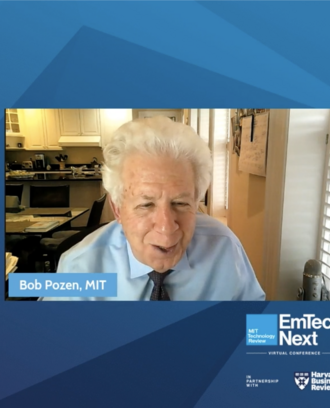The megatrends disrupting our economy today are well-documented: widespread digitalization and unparalleled globalization are changing the nature of competition and the nature of work. Yet despite the vast amount of coverage that these trends have
Douglas A. Ready is a Senior Lecturer in Organizational Effectiveness at the MIT Sloan School of Management.
received, there have been few fact-based studies on the leadership implications of these megatrends.Working together with Cognizant and colleagues at the Sloan School at MIT, we recently set out to better understand what defines great leadership in this turbulent time. We surveyed 4,000 people from over 120 countries around the world, conducted dozens of interviews with C-Suite leaders and led focus groups with next-gen leaders.
Our findings were troubling. We found three different types of leadership gaps in our study: a capabilities gap, an awareness gap and a resolution gap. When it comes to the capabilities gap, only 9 percent of respondents felt that their leaders had the skills or demonstrated the behaviors necessary to lead in the digital age. Only 12 percent indicated that their leaders possessed the right mindset to lead in the digital world. And only 13 percent strongly agreed that their companies were prepared to compete, let alone win, in this new environment.
Taken together these gaps will keep companies from succeeding in the future. This is particularly true of companies that are lucky enough to still be successful, but are facing trying times ahead, perhaps without knowing it yet, or at least not wanting to face the facts yet.
These willful blind spots were endemic and grouped loosely into four different categories: strategic, cultural, human capital, and personal. Strategic blind spots were found when leadership teams failed to grasp the very nature of the business they were in or the changing nature of the competitive forces shaping their industry. Cultural blind spots were more likely to be present when leadership teams surrounded themselves with the same people that got them into trouble in the first place. Human Capital blind spots were likely to be found when a company failed to change their talent management or leadership development processes to adjust. And personal blind spots were manifested by leaders doing the self-reporting of higher preparedness scores than warranted.
To overcome these blind spots, leaders need to be clear about the behaviors that will shape what great leadership will look like and feel like in the new economy. We identified three categories of leader behaviors to address: those behaviors that are eroding, emerging, and enduring. We refer to these categories as the 3 E's. Eroding behaviors are the ones that were manifestations of how leaders led in simpler times: top-down decision making, long term strategic plans, tell-sell style communication patterns, and were characteristics mostly common to male dominated leadership groups. Emerging behaviors are the ones we keep hearing about as central to leading in the new economy: empathy, authenticity, transparency, humility, inclusiveness, collaboration and connectedness, experimentation and the like. Enduring behaviors are the ones like trust, integrity, honesty, purpose, and a commitment to continuous communication—things that have stood the test of time.
Talking about behaviors is useful, but if that’s all you do, all you have done is create a new vocabulary; you haven’t written a playbook of accompanying actions. That’s why we called the study The New Leadership Playbook for the Digital Age. Leaders need to get beyond the words and start creating the conditions for success to take hold in their organizations. In order to do that we found it useful to look at some companies that are already living in the future. What these leaders have done is to create a collective leadership capability and they’ve set that tone by adopting what we call the hallmark mindsets of great leadership communities. The four mindsets of these communities are what we refer to as producers, investors, connectors, and explorers. They are not leadership competencies but critical parts of the palpable buzz that you feel in next-gen work environments. Cultivating all four mindsets is critical. Producers are digitally savvy, customer obsessed, and analytically driven. Investors are purpose-driven, community minded, and invested in the continuous development of themselves and others. Connectors are relationship-driven, focused on creating a powerful sense of belonging and connectedness. Explorers are incurably curious, resilient, and comfortable with active and ongoing experimentation.
But beyond words, leaders need to demonstrate that they are willing and ready to change by actively role-modeling new behaviors and they need to bake these behaviors into their talent management systems and processes to ensure that a new kind of leader emerges in their organizations. If they create the mindsets of behaving like producers, investors, connectors and explorers, then they’ll be writing their leadership playbook for the digital age—one that will guarantee a new generation of leaders explodes into the future.
It’s that simple and that difficult—all at the same time.
Doug Ready is a senior lecturer at MIT’s Sloan School of Management.



